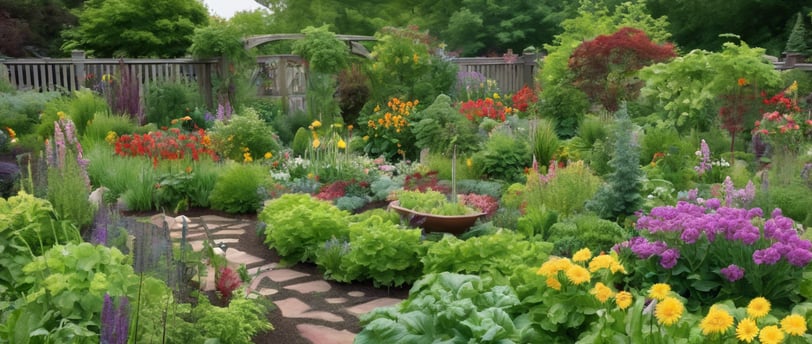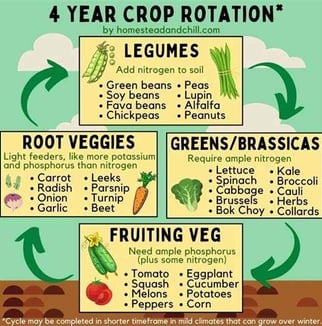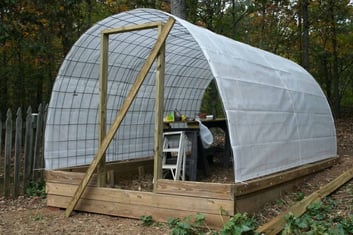Mastering Off-Grid Gardening: Top Hacks for Year-Round Harvests
We go through some critical tips that when you follow them, you will be prepared to start growing your own food year round, in any climate!
GARDENING
11/20/20243 min read


The Best Off-Grid Gardening Hacks for Year-Round Harvests
Living off-grid brings freedom and sustainability, but it also means mastering the art of self-reliance—especially when it comes to food production. Whether you're just starting your off-grid gardening journey or looking to maximize your yields, these tried-and-tested hacks will help you grow fresh, organic produce all year long.
Creating a Sustainable Garden Ecosystem
To fully embrace the off-grid lifestyle, the first step in the gardening process is to establish a sustainable garden ecosystem. Begin by choosing a variety of plants that complement one another; this is known as companion planting. For instance, pairing tomatoes with basil not only enhances growth but also improves flavor. Additionally, incorporating perennial plants can significantly reduce the amount of time spent on gardening every season.
Utilizing organic matter, such as compost and mulch, supports soil health, conserves moisture, and ultimately leads to higher yields. Composting kitchen scraps and yard waste is an eco-friendly way to enrich your soil and boost biodiversity in your off-grid garden.
1. Embrace Companion Planting for Pest Control and Higher Yields
Companion planting is the age-old practice of growing plants together that benefit one another. For example:
Marigolds repel pests like aphids and nematodes when planted near tomatoes and beans.
Basil improves the growth and flavor of tomatoes while deterring mosquitoes.
Corn, Beans, and Squash (The "Three Sisters"): Corn provides a trellis for beans, beans fix nitrogen in the soil, and squash covers the ground to prevent weeds.
This approach minimizes your need for pesticides and fertilizers, making it perfect for off-grid living.
2. Build a DIY Hoop House for Year-Round Growing
A hoop house is an affordable way to extend your growing season and protect crops from harsh weather.
Use PVC pipes and clear plastic to create a tunnel over your garden beds.
In cold months, it acts as a mini-greenhouse, while in summer, you can add shade cloth to prevent overheating.
This simple structure can help you grow hardy greens like kale and spinach even in winter.
3. Use Raised Beds to Optimize Soil and Water Use
Raised beds are a game-changer for off-grid gardens:
They warm up faster in spring, allowing earlier planting.
You can fill them with nutrient-rich soil, reducing dependency on external fertilizers.
Raised edges prevent water runoff, ensuring every drop is absorbed by your plants.
4. Collect and Recycle Rainwater for Irrigation
Water is a precious resource when living off-grid. Set up rain barrels to collect runoff from your roof and use this free resource to keep your garden thriving. Pro tips:
Install a simple gravity-fed drip irrigation system for even water distribution.
Add a fine mesh screen to your barrels to keep out debris and insects.
5. Practice Crop Rotation to Maintain Soil Health
Growing the same crops in the same spot year after year depletes soil nutrients and
encourages pests. Rotate your crops annually by family:
Legumes (peas, beans) replenish nitrogen.
Root crops (carrots, potatoes) loosen the soil.
Leafy greens (lettuce, kale) and fruits (tomatoes, peppers) balance nutrient needs.
This natural method keeps your soil fertile and reduces the need for fertilizers.
6. Harness the Power of Vermiculture (Worm Composting)
Off-grid gardens thrive on nutrient-rich soil, and worm composting is an efficient way to produce it. Start a vermicompost bin by:
Adding kitchen scraps, shredded paper, and worms.
Keeping the bin moist but not soggy.
Harvesting "worm tea" (liquid fertilizer) for your plants.
This method is compact, odor-free, and produces incredible compost for your garden.
7. Invest in Perennial Crops for Low-Maintenance Food
Unlike annual crops, perennials grow back year after year, making them ideal for off-grid living. Consider planting:
Asparagus
Rhubarb
Berry bushes like raspberries and blueberries.
Herbs like thyme, oregano, and rosemary.
These plants require less effort and provide consistent harvests.
8. Use Mulch to Conserve Water and Improve Soil
Covering your garden beds with organic mulch (like straw, wood chips, or dried leaves) offers multiple benefits:
Retains soil moisture, reducing your need for irrigation.
Prevents weeds, saving you time and effort.
Gradually breaks down to improve soil fertility.
9. Try Vertical Gardening to Maximize Space
For those with limited space, vertical gardening is a lifesaver. Use trellises, hanging baskets, or wall planters to grow climbing plants like cucumbers, beans, and squash. This method improves air circulation, reduces pests, and makes harvesting easier.
10. Preserve Your Harvest for the Off-Season
When your garden is overflowing, it’s time to think ahead. Use methods like:
Canning: Preserve fruits and vegetables in jars for long-term storage.
Dehydrating: Turn surplus produce into lightweight, shelf-stable snacks.
Freezing: If you have a solar-powered freezer, blanch and freeze veggies to maintain freshness.
These methods ensure you have food all year, even when your garden slows down.
Start Growing Today!
Off-grid gardening is more than just a way to grow food—it’s a path to independence and sustainability. By applying these simple hacks, you can enjoy fresh, homegrown produce year-round, no matter where you live.





